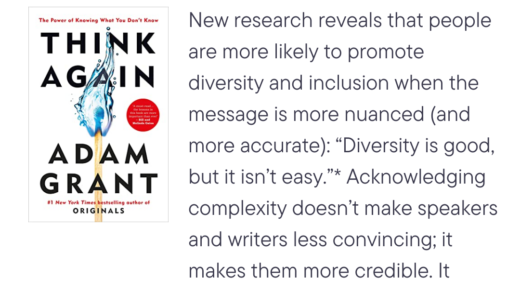Macro starts with micro. When we think about big problems, we’re forced to grapple with big numbers. What would it take to solve problems for 1,000 people? Your first instinct might be to say: We’ll have to think about the big picture, because we can’t very well intervene individually with 1,000 people. But that notion, as it turns out, is exactly wrong. Notice how often the heroes in this book actually organized their work on a name-by-name basis. The teachers in Chicago assisted ninth graders using a by-name list. The team in Rockford housed homeless people using a by-name list. The domestic violence high-risk team protected women using a by-name list. All of these efforts were also aided by systems change, to be clear, but those changes were often sparked by a familiarity with individual cases. (The domestic violence team discovered that abusers needed to have their GPS bracelets added before they were released from jail—not two days later.) The lesson is clear: You can’t help a thousand people, or a million, until you understand how to help one. That’s because you don’t understand a problem until you’ve seen it up close. Until you’ve “gotten proximate” to the problem, as we explored in the chapter on leverage points. The leaders of the University of Chicago Crime Lab read the medical examiner’s reports on 200 homicide victims. How many people develop strong opinions about crime without bothering to train their intuition in that way? How many people develop strong opinions about homelessness without knowing any homeless people? It’s true that it’s harder to imagine this “by-name” methodology working with millions of people rather than hundreds or thousands. To affect millions requires systems change. But even systems change usually starts up close: Someone understands a problem so well that they formulate and lobby for a new policy at the city or state level, and it works, and later other state leaders see that the policy works and they embrace it, too. Remember the efforts of Dr. Bob Sanders in Tennessee, who lobbied for mandatory car seats? Macro starts with micro. If you want to help solve big problems in the world, seek out groups who have ambitious goals coupled with close-up experience.
People can’t see solutions to problems unless they experience it up close or in person. That is just how we are in general. While the expectation is that you can get super talented and intellectually rigorous people to tackle any problem in any field, that does not really hold true if they do not have context and have viewed the problem from up close before.
Thats not to say that the opposite can’t happen too. Someone who might be too close to the problem will not be able to make decisions for the “overall good”. Regardless, what I find most likely to work are people or leaders who take the effort to understand their users or customers up close and have a strong local context of their problems.
Ultimately, humans are just pattern recognition machines and we can’t do what we’re good at if we are just relying on spreadsheets and dashboards to train the “pattern recognition algorithm” in our brains.



